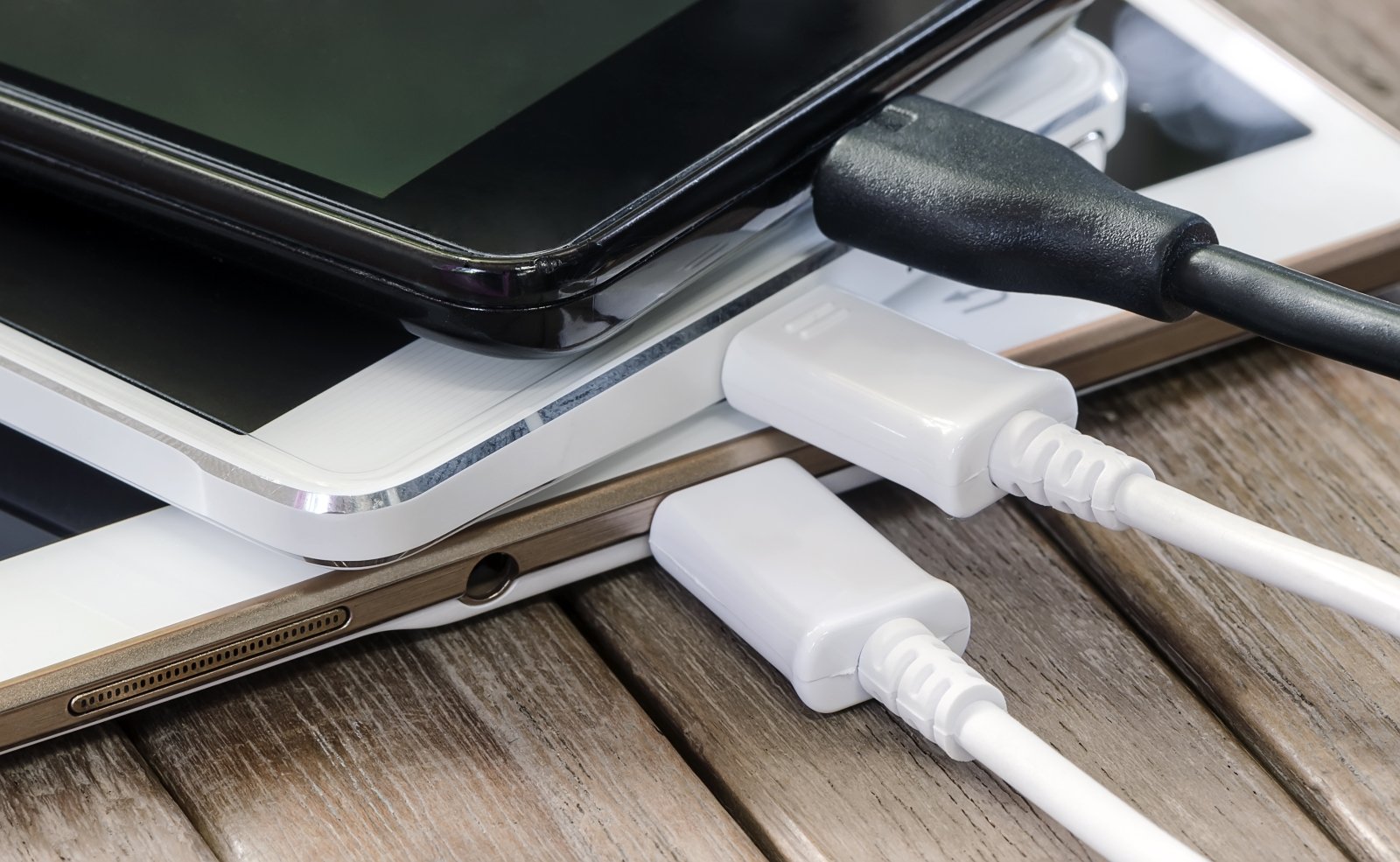It must also be acknowledged that the change would affect the amount of e-waste only symbolically – at around 57 million tonnes per year worldwide. tons of such waste, the introduction of a universal charger would reduce them by about 1 thousand. tons.
At the end of September, the Commission presented proposals for a Radio Equipment Directive, which provides for a harmonized charging port for electronic devices.
“This will allow users to charge their devices with the same USB-C charger, regardless of the brand of the device. In addition, harmonized fast charging technology will help to ensure that charging speeds are not unduly restricted by different manufacturers and that the charging speed is the same when using any charger suitable for the device, ”the Commission communication states.
The amendments to the directive also include the decoupling of sales of chargers and electronic devices.
“Consumers will be able to buy a new electronic device without a new charger. This will limit the number of chargers that may be unnecessarily purchased or not used. Reducing the production and disposal of new chargers is expected to reduce electronic waste by almost a thousand tonnes per year.
In addition, it will help consumers reduce the number of new chargers purchased and save 250 million. per year, as there will be no need to buy unnecessary chargers, ”the report said.
The proposal for the revision of the Radio Equipment Directive will have to be adopted by the European Parliament and the Council of the EU under the ordinary co-decision legislative procedure. A transitional period of 24 months from the date of adoption should allow sufficient time for industry to adapt before the new regime enters into force.
“European consumers have been dissatisfied for a long time with the wrong chargers in their drawers. We have given the industry enough time to make its decisions, and now is the time to take legislative action on the universal charger.
This is an important achievement for both our consumers and the environment, and it is in line with our ambitions for green and digital transformation, ”said the European Vice-President of the European Commission for a Digitally Adapted Europe. Margrethe Vestager.
Waste adds sluggishly
Head of Electronics Manufacturers and Importers Organization Asta Pakštaitė-Marcinkienė Delfi said it welcomed the EC initiative.
“We believe that it is timely and beneficial for consumers primarily for convenience, but at the same time beneficial for businesses seeking more sustainability in their operations. We have probably all been in a situation where many times we have a mobile phone discharged, we do not have our own charger nearby, and another manufacturer’s phone charger is not suitable for that.
Thus, the use of a single charger would be a very practical solution and would allow consumers not to spend on buying a new device. Not only that, it will definitely reduce the waste flow, because even if you buy a new electronic device, you would not have to buy a new charger, and you will save natural resources, ”she said.
The organization’s data show that residents are slow to dispose of electronic waste and tend to store it at home.
“It is estimated that in the average European household, 11 out of 72 electronic items are obsolete or damaged. One European resident accumulates an average of 4-5 kg of unused electrical and electronic equipment each year, which is then disposed of as unnecessary items. A study in France showed that between 54 and 113 million mobile phones weighing 10 to 20 tons just lie in the residents ’homes (drawers and other storage places). This means that together with telephones, the charging ports of electronic devices also fall in the drawers, ”said A. Pakštaitė-Marcinkienė.
Asta Pakštaitė-Marcinkienė
© Personal album
–
She noted that electronic waste is one of the fastest growing waste streams in the world, increasing by 2 million each year. tons.
“Although the amount of electronic waste is growing alarmingly, less than a fifth of it is recycled in the world. As the European Union implements the Green Course and promotes the circular economy, the demands for more sustainable products and reduced environmental impact will only increase in the future. Climate change also reminds us that the world community must be a more responsible consumer, ”said the interlocutor.
Tethered the user
A. Pakštaitė-Marcinkienė also noticed that the transition to a universal charger will cost manufacturers and they may have losses.
“For example, a charger suitable for only one mobile phone model” tied “the user, and with the advent of the universal introduction, this will not be the case. However, the business itself is on the path of sustainability and conservation of natural resources, looking for ways to use as many recycled materials as possible in the production of new products, and to technologically create products that are easier to repair and recycle.
Thus, it is hardly possible to find arguments as to why this should be opposed, because, frankly, it would even be unfashionable these days, even though implementing such changes would cost more.
I believe that producers, for whom the EU market is important, will adapt – it will only take time. Both producers and consumers will benefit in the future. However, it should not be forgotten that more attention needs to be paid to educating the population about proper waste sorting and reuse of products, and to creating a convenient infrastructure for adding waste. In Lithuania, we have all the conditions for sorting electronic waste, ”the representative of electronics manufacturers and importers urged.
Linas Ivanauskas
© Personal album
–
In turn, the director of the Association of Electronics Distributors Linas Ivanauskas also said a universal USB-C charger would be one step in reducing electronic waste.
“On the other hand, this step should be accompanied by other actions in this direction – the responsibility of manufacturers to assemble products that should not be equipped with a charger, allowing the purchase of this item separately. Similarly, sustainability should be pursued in the design of such chargers, with a sense of responsibility for their durability and recyclability. At the same time, consumers should be educated about responsible consumption, saving chargers, extending their service life, ”he explained.
L. Ivanauskas noticed that the transition to a universal USB-C charger will require additional investments from many manufacturers.
“After all, a charger is not just a separate item, it is connected to the device’s access, connection. Consequently, it will be necessary to adjust the design not only of the charger but also of certain parts of the device. The question would therefore be whether this sustainability-oriented step should be backed up by policy measures and whether the whole issue should be left to producers. Should this responsibility be shared by all chains, one of whom would be consumers, who pay for measures that demand sustainability at higher product prices? The question remains open for the time being, “said a representative of electronics distributors.
A decade ago, there were about 30 different charger connectors on the electronics market. They have now fallen to around 3. For example, an exclusive charger is used by Apple, which has previously spoken out against moving to a universal standard.
Remigijus Lapinskas
© DELFI / Josvydas Elinskas
–
Would like more
The Single Charger Directive was also supported by the head of the Green Policy Institute Remigijus Lapinskas.
“In the long run, this solution should contribute to the reduction of e-waste. In addition, the production of any electrical or electronic product uses natural resources and creates additional pollution, so this solution should contribute both to the conservation of resources and to the creation of a cleaner environment.
In addition, the new procedure, where we all charge mobile phones with the same chargers, would be convenient for the consumers themselves. If the device is unplanned, it would be enough to borrow a charger from a colleague or ask for this service in a cafe. Now that mobile phones have different charging connections, the situation is a bit more complicated, ”he said.
However, according to R. Lapinskas, this decision is just a drop in the ocean.
“More than 57 million people will be created in the world this year. tons of electronic waste, and as it declares itself European Commission, this universal charger initiative could reduce the amount of electronic waste by just 1 thousand. tons per year.
Every step towards a greener future is important, but in order to achieve real change, more and wider action is needed to ensure the effective implementation of the circular economy. In particular, by promoting the longevity of products and by manufacturing electronic devices in such a way that they can be repaired, recycled and reused in the event of failure.
There are still many problems in waste collection and recycling. The EU average is around 40% recycled. electronic waste. Some countries are showing very good results here, for example, according to the EC, Estonia recycles almost 70%. At that time, the indicator of Lithuania was half as low (ie 35%).
It is positive that the reduction of e-waste is one of the EU’s goals, and some measures to achieve this goal are already provided for in the EU Circular Economy Action Plan, which promises to encourage the transformation of our production and consumption habits, ”said R. Lapinskas.
–
It is strictly forbidden to use the information published by DELFI on other websites, in the media or elsewhere, or to distribute our material in any form without consent, and if consent has been obtained, it is necessary to cite DELFI as the source.




